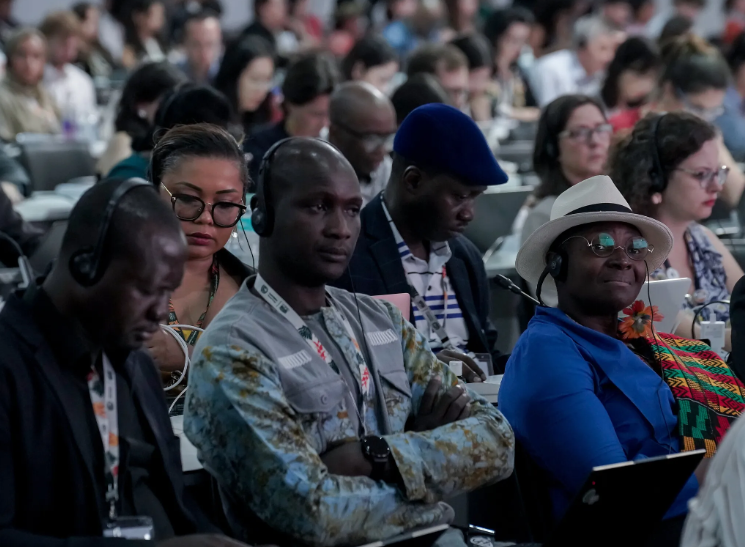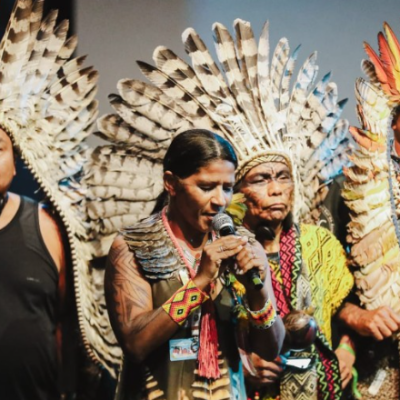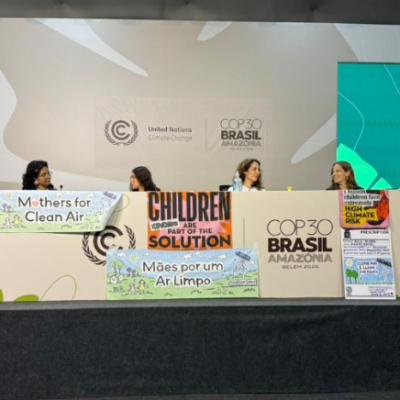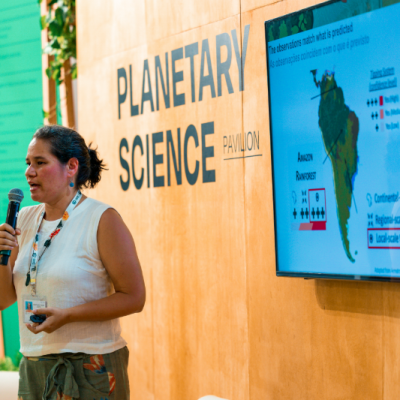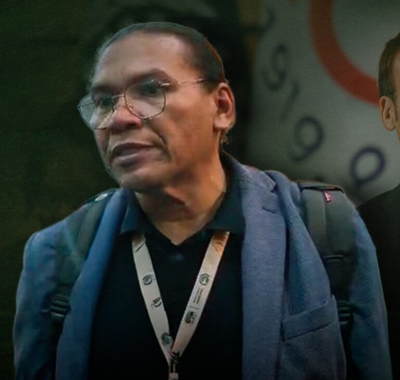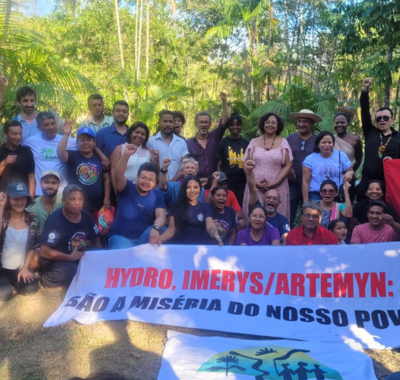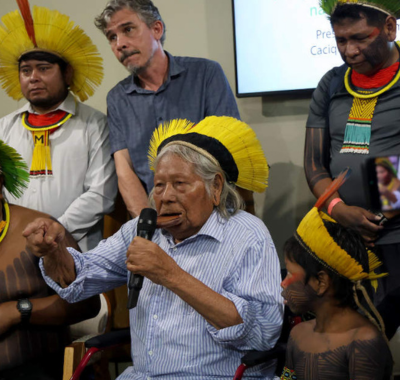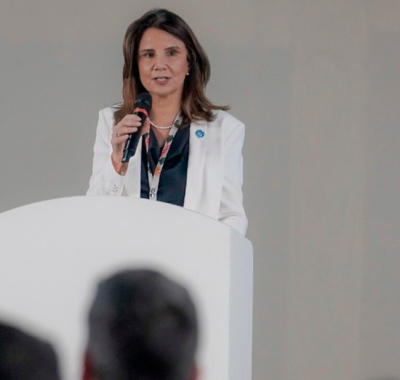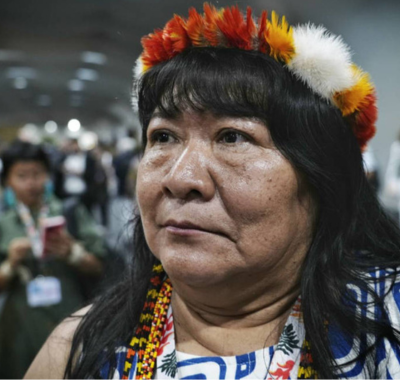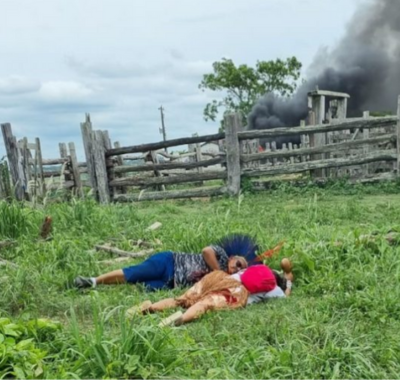Countries begin negotiations on indicators, financing, and other issues that could contribute to the implementation of actions in this area. Nexo spoke with observers who are following the talks
By Mariana Vick
Climate adaptation is one of the main items on the agenda for COP30, the UN climate change conference that began on Monday (10) in Belém, Brazil. Countries must decide on topics still open in the Paris Agreement. If agreed, they can pave the way for the implementation of this agenda.
Neglected in most COPs, adaptation is important to protect lives and prevent other damage caused by climate change. The issue often divides developed and developing countries, the latter being the most affected by extreme weather events. Negotiations on the issue at COP30 began with unexpected divisions, but their outcomes are uncertain.
In this article, Nexo explains what climate adaptation is, what the Paris Agreement says about the issue, and what topics are on the COP30 negotiating agenda. It also highlights the challenges already identified in the talks and civil society’s expectations for the outcome of the event.
What is climate adaptation?
Climate adaptation, as defined by the IPCC (UN Intergovernmental Panel on Climate Change), is the process of adjusting human and natural systems to climate change to reduce vulnerabilities and increase the resilience of communities, ecosystems, and economies.
The Paris Agreement seeks to limit global warming to 1.5°C above pre-industrial levels—a threshold that the world has not yet officially reached. But that does not mean that the effects of climate change are yet to come: in fact, they are already underway. Therefore, in addition to reducing greenhouse gas emissions—the cause of global warming—the world needs to prepare to deal with its consequences.
1 in 5 people worldwide already feel the strong impacts of climate change daily
9 out of 10 Brazilians say they have felt some effect of climate change, according to a Quaest survey released on Tuesday (11).
Storms, floods, droughts, and forest fires are among the extreme weather events that require adaptation measures. In Brazil, the most recent example of such events was the tornado that hit the state of Paraná on Friday (7). Seven people died and more than 750 were injured across the state, according to the Civil Defence.
Adaptation is a global challenge, but with regional, national, and local dimensions. Developing countries, which are historically more unequal, have higher poverty rates and less infrastructure, and are particularly vulnerable to the effects of climate change. Actions that can reduce their vulnerability include:
- investment in infrastructure in areas at risk
- climate risk management in agriculture
- creation of surveillance systems for diseases caused by vectors that benefit from rising temperatures (such as Aedes aegypti, which causes dengue fever)
What is the Global Goal on Adaptation
In 2015, the Paris Agreement established the Global Goal on Adaptation (GGA), which seeks to increase countries’ adaptive capacity, strengthen their resilience, and reduce their vulnerability to climate change through an adequate response to the damage that is already occurring.
To measure countries’ progress in adaptation, the GGA proposes the creation of indicators. Just as we now count the tons of greenhouse gases emitted, adaptation indicators would serve to measure how many lives are being protected or to what extent systems are strengthened against climate change.
The Paris Agreement, however, did not specify what these indicators would be. Negotiations on their definition began eight years after the treaty was signed, in 2023, at COP28 in Dubai. Countries brought together a group of experts to develop indicators within seven major thematic areas:
- water supply and sanitation
- food and agriculture
- impacts on health and health services
- ecosystems and biodiversity
- infrastructure and human settlements
- eradication of poverty, and livelihoods
- cultural heritage and traditional knowledge
Initially, the number of indicators proposed by experts was enormous: 9,529. Then the list was reduced to 490. Later, it was further reduced to a compilation of 100 indicators, presented at the Bonn climate conference—an event that serves as preparation for COP—in June 2025.
This consolidated list is being discussed at COP30. The GGA was added to the conference’s negotiation agenda on Monday (10). Observers expect that, if approved, the list of indicators will be able to operationalize — in other words, enable the implementation—of the Global Goal on Adaptation.
Synergy with climate finance
Another topic that comes up in the COP30 negotiations is financing for climate adaptation. Daniel Porcel, a climate policy expert at the Talanoa Institute, told Nexo that there is synergy between these agendas. Financing is one of the crucial elements in making it possible to implement adaptation goals.
COP30 revisits a decision adopted at COP26 in Glasgow in 2021. That year, countries agreed to double adaptation financing to around US$40 billion by 2025 (it is not yet known whether this target has been met), and the deadline for meeting the target is now ending, with no clarity on what comes next.
Developing countries are advocating for an agreement on a new adaptation financing target. The group called LDCs (Least Developed Countries) has proposed tripling it by 2030. But there is still no consensus on the idea. It is unclear whether the target will be renewed — and if so, how it will be renewed.
The need for adaptation financing in developing countries is significant. In October, the United Nations Environment Program estimated this amount to be between US$310 billion and US$365 billion per year until 2035 (the figure varies in different scenarios) — which is 12 to 14 times more than current financing flows.
US$26 billion was the international public financing flows for adaptation in developing countries in 2023; this amount was lower than the US$28 billion in 2022, according to the UN report
The decision on National Adaptation Plans
A third topic that should be on the negotiating agenda is the so-called NAPs (or National Adaptation Plans), which are an instrument for countries to plan and implement adaptation measures in the medium and long term. They are like “adaptation master plans.” They are separate documents from the NDCs, the countries’ general climate goals.
68 countries submitted their National Adaptation Plans to the UNFCCC
The Climate Convention, which organizes the COPs, published a report in October that concluded that the main difficulty countries face in relation to NAPs is their implementation. “The intention [at COP30] is to review the technical guidelines for NAPs to support countries in implementing their plans, but it is a more operational agenda,” Flávia Martinelli, climate change specialist at WWF-Brazil, told Nexo.
What are the challenges in the negotiations?
Negotiations on adaptation have already begun at COP30. One of the challenges identified in the talks concerns the indicators for the Global Goal on Adaptation. According to Porcel, who is following the negotiations, developing countries have not reached a consensus on the final list of 100 indicators. Some of them argue that the decision on the issue should be postponed until COP31 in 2026.
The parties that say they want to delay the decision are wary that the list will create additional work for them—since, once the indicators are adopted, countries will have to report their compliance to the Climate Convention regularly — according to Porcel. “The list is not perfect, but the indicators are not mandatory,” he said. “This decision [to postpone] could lead to a delay in implementation, this being a COP of implementation.”
Another potential conflict between countries concerns a group of indicators on financing. “There is more than one option in the text drafted by the experts,” according to Martinelli, and some of these indicators refer to controversial issues, such as investments by developed countries in developing countries and the role of the private sector.
“Countries are aware that the adaptation agenda is necessary and needs to move forward, but there is a gap between the positions of developed countries—especially the European Union, Australia, the US, and the UK—and those of developing countries, especially Latin American and African countries.”
Flávia Martinelli
A climate change expert from WWF-Brazil, in an interview with Nexo
According to Martinelli, developed countries traditionally try to shift the topic of financing away from adaptation agendas, going against the mention of means of implementation in the texts. Developing countries, on the other hand, fight for the inclusion of these terms, in addition to requesting mention of Indigenous Peoples and local communities.
What are the expectations for COP30?
Geographer and senior researcher at the Iyaleta research association, Diosmar Filh,o stated that, in an ideal scenario, COP30 would deliver the approval of the 100 indicators and financial support for the National Adaptation Plans. “We would meet the interests of most COP countries and move on to implementation,” he said.
In addition to financing, it is important to ensure capacity building so that developing countries can implement their adaptation decisions, he said. “Not every country has a technical and scientific structure like Brazil. It is a reality of access to data and researchers that much of the developing world does not have.”
Despite the challenges, he said that negotiations at COP have only just begun. “There was a first round [of talks] that was not positive for the indicators, but we need to intensify. The negotiation is open. The expectation is that we will reach the last week with a consensus on these issues,” he said.
Porcel made a similar assessment. “In Bonn [where there was a preparatory meeting for COP30], the G77 [United Nations group of developing countries] reached a consensus in the final days on means of implementation. This contributed to a positive outcome. If this happens at COP30, everything can work out.”
—
This report was produced by Nexo, through the Collaborative Socio-environmental Coverage of COP 30. Read the original report at: https://www.nexojornal.com.br/expresso/2025/11/12/cop30-adaptacao-climatica-debate-entre-paises

